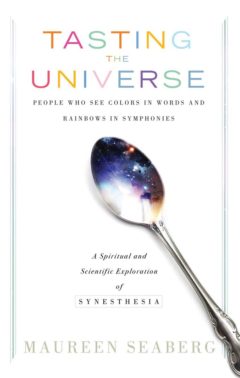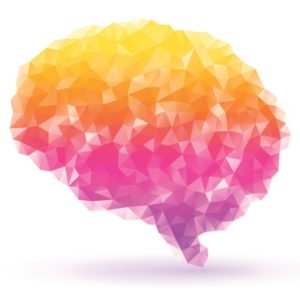Tasting the Universe

Tasting the Universe: A Spiritual and Scientific Exploration of Synesthesia
By Maureen Seaberg
New Page Books
Imagine a world in which numbers have color, musical sounds shimmer like rainbows, and words have taste and texture; this is the world of those with synesthesia, and it might be your world or that of someone you know. Synesthesia, a “neurologically based condition in which stimulation of one sensory or cognitive pathway leads to automatic, involuntary experiences in a second sensory or cognitive pathway,” is thought to be due to a cross-wiring of or lack of chemical inhibition between brain neurons, and it’s estimated that about 5 percent of Americans experience its effects, with the greatest number of these being artists, musicians, writers, poets, and other creatives.
“Like all synesthetes of my generation,” said Seaberg, “I learned as a child not to speak of the strange, if ethereal and beautiful, tableau before my eyes. . . . I know the ink is black in my newspapers and books, but I see much more than that. … If you placed a sheet of cellophane on top of this page, with a different color for each of the letters, the result would be a pretty close approximation of what I see.” Also on the list of those who share the trait are Lady Gaga (“I see sound like a wall of color”), violinist Itzhak Perlman (the tone produced by his E string is bright red), Billy Joel, Eddie and Alex Van Halen, Stevie Wonder, composers Richard Wagner and Franz Liszt, the late Duke Ellington, Marilyn Monroe, and many others who have left their creative mark upon the world.
While most synesthetes have been so since childhood, it is possible to develop synesthesia later in life, and some who have suffered trauma or have had a near-death experience have found themselves experiencing this conjoining of sensations as a result. Seaberg, once a hard journalist who came to devote herself to the topic, said “To develop synesthesia later in life is like not having enough melanin in your skin, I imagine, and being dropped off in the sunniest of climes.” Her book is a scientific, artistic, and spiritual study of the phenomenon, which she considers to be “nothing short of grace.” In this, she is in agreement with those among the Buddhists who believe that synesthesia is part of the experience of enlightenment.
Seaberg hopes that her work will inspire those of us with “different minds” to embrace our uniqueness and use the gifts it brings to become the wondrous, creative individuals we were meant to be.
Maureen Seaberg is a New York City-based journalist, lecturer, and workshop leader whose work has appeared in the New York Times, the Daily Beast, the New York Daily News, Irish America, and ESPN the Magazine, and on MSNBC, PBS, and NBC. She is a synesthete and the first journalist to have interviewed Itzhak Perlman, Billy Joel, and the family of Marilyn Monroe about their synesthesia.










